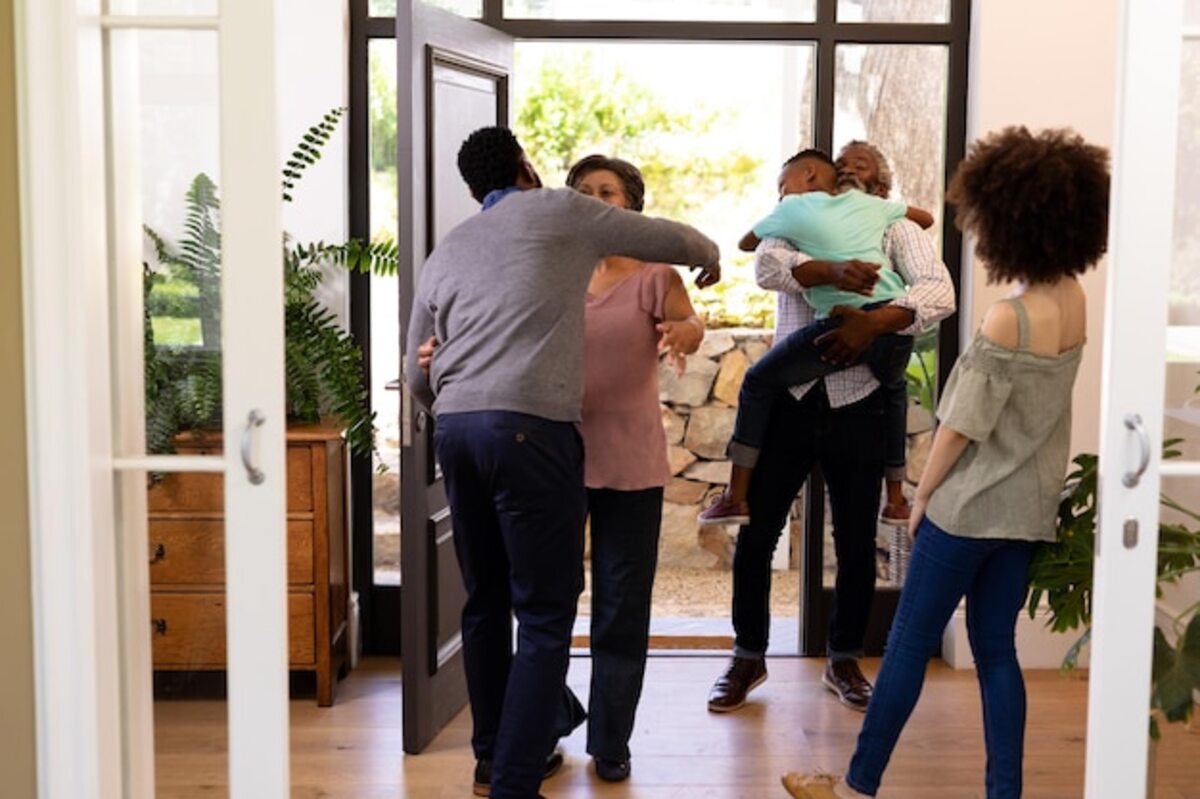Living the essence of home: Connections in your condominium

Living in a condominium is not just about space, but about creating meaningful connections that enrich your daily life. In 'Living the Essence of Home: Connections in Your Condominium', we will explore how to transform your residence into a true sanctuary where relationships and community thrive. From shared activities to utilizing common areas, discover how to make your condominium a place where every interaction matters and each day feels special. Dare to live the essence of home!
The importance of building a strong community in condominiums.
Building a strong community in a condominium is essential to transforming the experience of living in a shared space. It’s not just about sharing walls or hallways, but about fostering an environment where residents feel connected and supported. A strong community can provide a sense of belonging, which in turn contributes to the emotional well-being of each individual. Neighborly relationships not only enrich everyday interactions but can also be an invaluable source of support during difficult times, creating bonds that go beyond the superficial.
Additionally, an active community allows for organizing activities and events that promote socialization and mutual enjoyment. From informal gatherings to collaborative projects aimed at improving common areas, these initiatives not only strengthen connections among neighbors but also enhance the quality of the environment in which we live. By engaging in community life, each resident has the opportunity to contribute to a collective home where everyone feels valued and heard. Ultimately, building meaningful relationships within the condominium transforms the place where we live into a true home filled with warmth and camaraderie.
2. Social activities that promote connections among neighbors
Social activities are a fundamental pillar for fostering connection among neighbors in a condominium. Organizing events such as outdoor movie nights, community picnics, or swap fairs not only provides an opportunity to enjoy time together but also allows residents to learn about the stories and traditions of those around them. These informal interactions break the ice and create a friendly atmosphere where everyone feels welcome. Additionally, involving everyone in the planning and execution of these activities can further strengthen the sense of community and belonging.
The creation of groups based on common interests can also be an excellent way to bring neighbors together. Cooking workshops, book clubs, or yoga classes can attract people with similar affinities and provide a safe space to share ideas and experiences. By participating in these initiatives, residents not only enrich their social life but also learn to support each other in different aspects, which helps forge deeper bonds. In this collaborative environment, each neighbor has the opportunity to contribute something unique to the community fabric, thus transforming the condominium into a true shared home where connections flourish day by day.
3. Common areas: the heart of the condominium
Common areas in a condominium are more than just shared spaces; they are the latent heart of the community. These places, whether gardens, multipurpose rooms, or playgrounds, offer invaluable opportunities to foster interaction among residents. By using these spaces to organize social activities, such as outdoor movie nights or community markets, a sense of belonging and camaraderie can be cultivated that enriches the experience of living in a condominium. The key is to leverage these areas as platforms to connect with others and build meaningful relationships that transcend the walls of home.
Additionally, common areas can be designed and decorated collectively by the residents, adding a personal and unique touch to every corner of the condominium. Involving the community in decisions about furniture, gardening, or even scheduled activities can create a deep sense of ownership and shared pride. These initiatives not only beautify the environment but also promote a culture of collaboration and mutual respect. In this way, common areas become true meeting points where each resident can feel valued and connected to their neighborhood, making every day a celebration of community life.
4. Tips for organizing unforgettable community events
Organizing unforgettable community events is an excellent way to strengthen bonds among neighbors and create a sense of belonging in the condominium. To begin, it is essential to know the interests and preferences of the residents; this can be achieved through informal surveys or preliminary meetings. Once you have a clear idea of what excites the community, choose activities that are inclusive and accessible to everyone. From outdoor movie nights to food fairs where each neighbor brings a typical dish, the possibilities are endless. Don't forget to involve everyone in the planning, as this sense of collaboration will not only make the event more successful but also foster closer relationships.
The logistics of the event also play a crucial role in its success. Make sure to have suitable spaces within the condominium, such as meeting rooms or outdoor areas, and consider the necessary resources, such as chairs, tables, or audiovisual equipment. The promotion of the event should be creative; use bulletin boards, messaging groups, or social media to reach all residents. Additionally, consider establishing an organizing committee made up of enthusiastic volunteers who will take care of different aspects of the event: from decoration and entertainment to food and beverages. At the end of the day, the most important thing is to enjoy together and celebrate the community; this way, each gathering will become an unforgettable memory for all participants.
5. How to overcome cultural barriers and promote inclusion
Overcoming cultural barriers and promoting inclusion in a condominium may seem like a challenge, but it is essential for building a cohesive and enriching community. To achieve this, it is fundamental to encourage open dialogue among residents. Organizing community events that celebrate diverse cultural traditions not only provides the opportunity to learn about each other's customs but also creates an atmosphere of mutual respect and appreciation. Activities such as food fairs, movie nights featuring international films, or art workshops can be excellent opportunities to learn from one another, thereby discovering the richness that each culture brings to the shared home.
It is also crucial to establish safe spaces where everyone feels welcome to participate and express their opinions. Creating inclusive committees that represent different groups within the condominium can help make more equitable and fair decisions for all. Promoting the use of multiple languages in announcements and communications can also facilitate the integration of those who do not master the predominant language. By making deliberate efforts to include all residents in community life, a sense of belonging is fostered that transforms the condominium into a true home where every voice matters and every story counts.
6. The influence of social media on neighborhood connections
Social media has transformed the way we communicate and connect with others, even at the neighborhood level. Platforms like Facebook, WhatsApp, and Instagram have enabled residents of a condominium to form virtual communities where they can share information, organize events, or simply stay informed about what is happening in their immediate surroundings. This new form of interaction not only facilitates quick and effective communication between neighbors but also creates a sense of belonging by allowing people to get to know each other beyond the casual greeting in the hallway.
Furthermore, social media can be a powerful tool to foster collaboration and mutual support within the condominium. Groups dedicated to specific topics—such as security, recreational activities, or goods exchange—allow residents to actively engage in community life without the need for physical barriers. By sharing experiences, resources, and recommendations through these digital platforms, a more cohesive and friendly environment is created that can significantly enrich the experience of living in a condominium. Thus, social media not only complements personal connections; it also promotes a participatory culture that strengthens the bonds between neighbors.
7. Creating interest groups: from sports to art
In a condominium, the diversity of interests and passions among neighbors can be an inexhaustible source of meaningful connections. Creating interest groups that range from sports to arts allows residents to come together around activities they are passionate about. Imagine the dynamics of a soccer club where parents and children share laughter and effort, or a painting workshop where creativity flows and unexpected friendships are forged. By organizing regular events, such as sports tournaments or art exhibitions in the common area, not only is physical and emotional well-being promoted, but also lasting bonds are built among those who share the same space.
Additionally, these groups can foster a culture of collaboration and mutual support among neighbors. Outdoor yoga classes or community movie nights are perfect examples of bringing together people with different skills and interests, creating an inclusive and welcoming environment. The magic happens when residents begin to get to know each other beyond the everyday greeting; this is how authentic friendships flourish. By integrating these activities into the community calendar of the condominium, the shared space is transformed into a vibrant place where everyone feels they belong and can contribute to the collective well-being.
8. The role of the administrator in harmonious coexistence
The administrator of a condominium plays a crucial role in the harmonious coexistence of its residents. They are not only responsible for the administrative management and maintenance of the building, but also act as a mediator and facilitator of relationships among the neighbors. A good administrator must be attentive to the needs and concerns of the residents, creating an environment conducive to dialogue and collaboration. By promoting community activities, such as meetings or social events, the administrator can encourage interaction among neighbors, helping to build a more cohesive and supportive community.
Additionally, the administrator is responsible for establishing rules and guidelines that contribute to mutual respect and peaceful coexistence. This includes addressing conflicts when they arise, ensuring they are resolved fairly and equitably. The key is to maintain open and transparent communication with all residents, which not only facilitates problem-solving but also creates a sense of belonging and trust within the condominium. In this sense, the role of the administrator is not limited to technical aspects; it is essential to cultivate an environment where every neighbor feels valued and integrated into their shared home.
9. Real testimonials: inspiring stories of coexistence
The stories of coexistence in a condominium are the perfect reflection of the essence of home. Like in any community, each neighbor brings with them a life full of experiences, desires, and longings. From the group that organizes outdoor movie nights to those who come together to cultivate a community garden, these activities create bonds that go beyond simple daily interactions. For example, Ana and Luis, who lived distant in their work routines, found in the monthly meetings an opportunity to get to know each other better and forge a solid friendship. Thus, what began as a casual greeting in the hallway transformed into a creative collaboration to decorate the common area of the building.
The testimonies of those who have lived these experiences reveal how small actions can have a great impact on collective life. Marta, for her part, shares how the creation of a book club not only allowed her to enjoy her passion for books, but also fostered connections among neighbors of various ages. Conversations about literature quickly turned into discussions about dreams and personal projects, weaving a network of mutual support that transforms the loneliness of individual homes into a vibrant community. These inspiring stories remind us that by living together we share not only physical walls, but also emotions and meaningful moments that enrich our daily existence.
10. Strategies for resolving conflicts and maintaining peace in the neighborhood
In a condominium, coexistence can be enriching, but it can also present challenges in the form of conflicts. To resolve these situations and maintain a harmonious environment, it is essential to promote open and respectful communication among neighbors. Organizing regular meetings where any concerns or suggestions can be discussed not only helps clarify misunderstandings but also creates a space for everyone to feel heard. Empathy plays a crucial role; putting oneself in another's shoes can defuse tensions and facilitate collaborative solutions.
In addition to communication, establishing clear rules regarding the use of common spaces and schedules for noisy activities can prevent many disagreements. Involving all residents in the creation of these rules helps promote a sense of belonging and shared responsibility. Finally, cultivating a culture of recognition and appreciation for each neighbor's contributions fosters more positive relationships. Celebrating community achievements or simply thanking someone for their support can transform neighborhood dynamics, turning it into a true home where peace and mutual understanding prevail.



